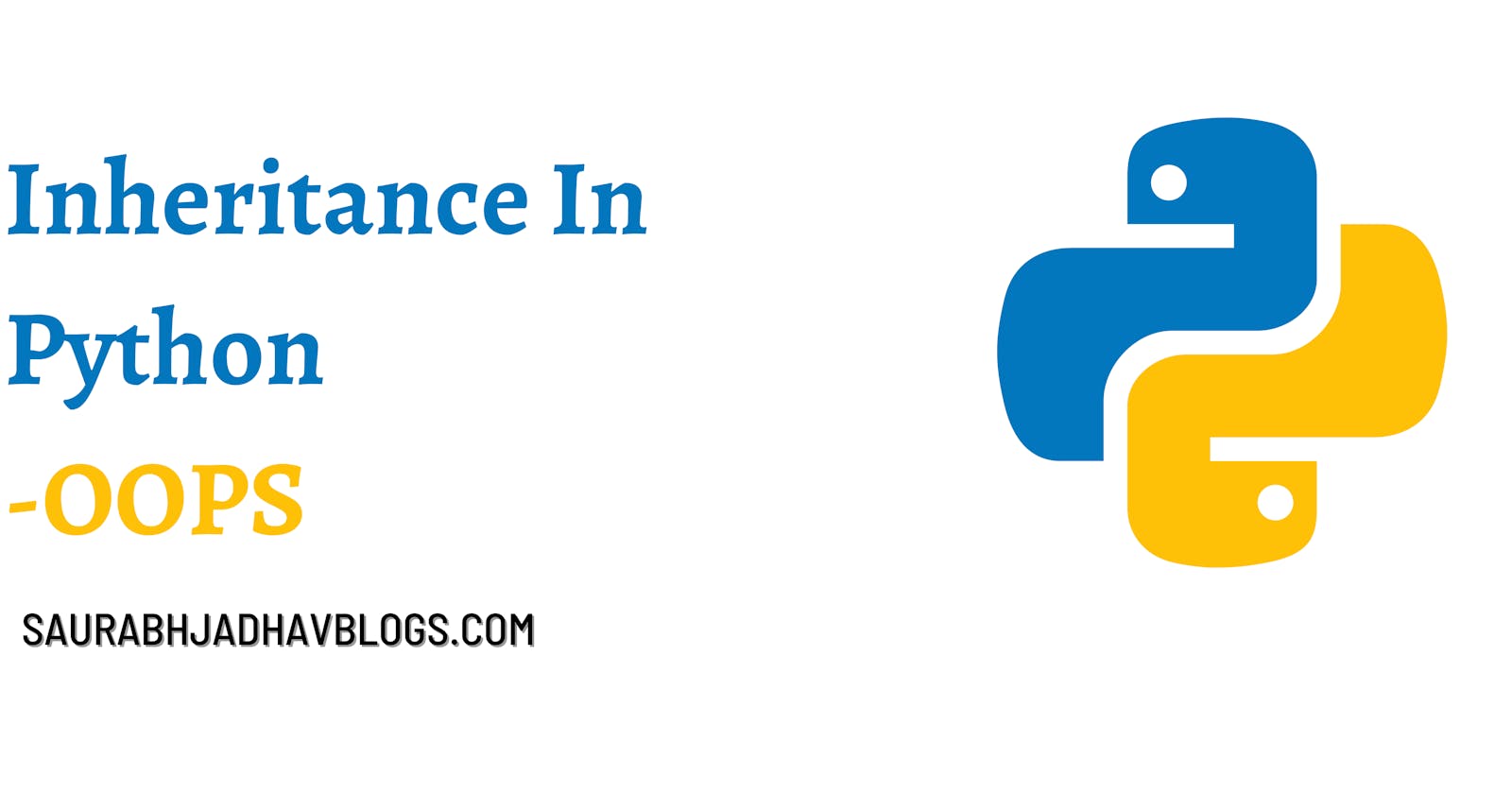Inheritance in Python - OOPS
Summary: in this tutorial, you’ll learn about Python inheritance and how to use the inheritance to reuse code from an existing class.
Lets start with Person Class:
class Person:
def __init__(self, first_name, last_name, age):
self.first_name = first_name
self.last_name = last_name
self.age = age
def introduce(self):
return f"Hi. I'm {self.first_name}. I'm {self.age} years old."
Suppose that you need to create a new class that represents an Student, called Student class.
Since an employee has a first name, last name, age, and behaviors like a person, you may want to copy the code from the Person class to the Student class.
But if you do so, you’ll have duplicate code. In other words, you’ll have the same piece of code in two classes. And it’ll take you double efforts to maintain the classes.
Instead of copying code from the Person class to the Student class, you can create a relationship between the student and person. An student is a person.
In object-oriented programming, you use inheritance to model the is a relationship.
The benefits of inheritance are:
- It represents real-world relationships well.
- It provides reusability of a code. We don’t have to write the same code again and again. Also, it allows us to add more features to a class without modifying it.
- It is transitive in nature, which means that if class B inherits from another class A, then all the subclasses of B would automatically inherit from class A.
Inherit
The following shows the syntax for defining a class that inherits from another class:
class child_class(parent_class):
...
In this syntax, you place the parent class within the parentheses following the name of the child class.
The following example illustrates how to define the Employee class that inherits from the Person class:
class Student(Person):
pass
Since the Student class is empty, you place the pass statement in its body to make the syntax valid.
So lets take example by code.
This is how we normally can assign attribute to class object withought defining variable in class definition.
class class2:
pass
abc=class2()
abc.name="Saurabh Jadhav"
print(abc.name)
Learn more about classes and objects in Python Series
Now lets do same with Inheritance:
class Person():
def __init__(self,name,age,gender):
self.name=name
self.age=age
self.gender=gender
class Student(Person):
pass
We defined class Person and and inherited that class in Student class.
id1=Student("wonder woman",122,"female")
We created object id1 and assign constructor values for Person class arguments.
id1.course="swordmanship"
id1.rollno=2
id1.year=3
We added attributes and assign values to them.
print("Name:",id1.name,"Age:",id1.age,
"course:",id1.course,"year of study",
id1.year)
Output:
Name: wonder woman Age:122 course:swordmanship yearofstudy3
Full program:
#inheritance withought child class constructor
class Person():
def __init__(self,name,age,gender):
self.name=name
self.age=age
self.gender=gender
class Student(Person):
pass
id1=Student("wonder woman",122,"female")
id1.course="swordmanship"
id1.rollno=2
id1.year=3
print("Name:",id1.name,"Age:",id1.age,
"course:",id1.course,"year of study",
id1.year)
Add constructor in child class
Lets define Parent Class:
class Person():
def __init__(self,name,age,gender):
self.name=name
self.age=age
self.gender=gender
Now we need child class student with roll no etc.
class Student(Person):
def __init__(self,rollno,course,year,
name,age,gender):
super().__init__(name,age,gender)
self.rollno=rollno
self.course=course
self.year=year
Notice the super() line here.
Why we added this?
When We add __init__ in child class it overrides the parent class's __init__ .
So first we added all parent class constructor arguments and child class arguments in child class constructor like this:
def __init__(self,rollno,course,year,
name,age,gender):
Now we call super() method with __init__ and pass arguments for parent class constructor like this:
super().__init__(name,age,gender)
thats it now we have both classes base and child class with constructors.
Full code:
#inheritance with child class constructor
class Person():
def __init__(self,name,age,gender):
self.name=name
self.age=age
self.gender=gender
class Student(Person):
def __init__(self,rollno,course,year,
name,age,gender):
super().__init__(name,age,gender)
self.rollno=rollno
self.course=course
self.year=year
id1=Student(1,"Boxing",4,"superman",17,
"male")
print("Name:",id1.name,"Age:",id1.age,
"course:",id1.course)
Output:
Name: superman Age: 17 course: Boxing
Use of Methods in Inheritance
Lets create parent class again:
class Person():
def __init__(self,name,age,gender):
self.name=name
self.age=age
self.gender=gender
Now create child class and use a method to print data.
class Student(Person):
def intoduce(self):
print("My name is ",self.name)
print("My age is ",self.age,
"and my gender is ",
self.gender)
Now we can just create a child and use method like this:
id1=Student("wonder woman",2,"female")
id1.intoduce()
Full code:
#inheritance and methods
class Person():
def __init__(self,name,age,gender):
self.name=name
self.age=age
self.gender=gender
class Student(Person):
def intoduce(self):
print("My name is ",self.name)
print("My age is ",self.age,
"and my gender is ",
self.gender)
id1=Student("wonder woman",2,"female")
id1.intoduce()
Output:
My name is wonder woman
My age is 2 and my gender is female
Multilevel inheritance
We will create this hierarchy:
class Person():
pass
class Student(Person):
pass
class Child(Student):
pass
The code is almost same as we did above we will add new class and method here.
class Child(Student):
def intoduce(self):
print("My name is ",self.name)
print("My age is: ",self.age,"and my gender is: ",self.gender)
def introduceSchooling(self):
print("I m in ",self.year,"year of ",self.course,"course",
"where my roll no is",self.rollno)
In class child we added two methods.
We Student in child, and first method get data stored from Person Class and second method get data stored from Student Class
Lets See whole code:
#inheritance and methods
class Person():
def __init__(self,name,age,gender):
self.name=name
self.age=age
self.gender=gender
class Student(Person):
def __init__(self,rollno,course,year,
name,age,gender):
super().__init__(name,age,gender)
self.rollno=rollno
self.course=course
self.year=year
class Child(Student):
def intoduce(self):
print("My name is ",self.name)
print("My age is: ",self.age,"and my gender is: ",self.gender)
def introduceSchooling(self):
print("I m in ",self.year,"year of ",self.course,"course",
"where my roll no is",self.rollno)
id1=Child(1,"laxmichitfund(21 din me double)",2,"wonder woman",2,"female")
id1.intoduce()
id1.introduceSchooling()
Output:
My name is wonder woman
My age is: 2 and my gender is: female
I m in 2 year of laxmichitfund(21 dinme double) course where my roll no is 1
So that was about it, Thank you for reading have a nice day.

